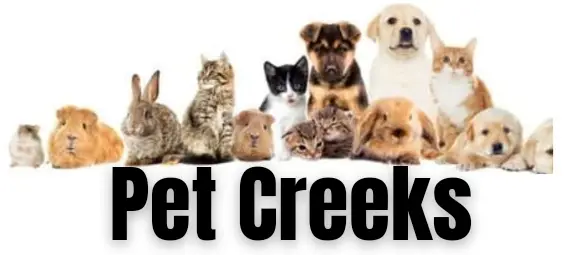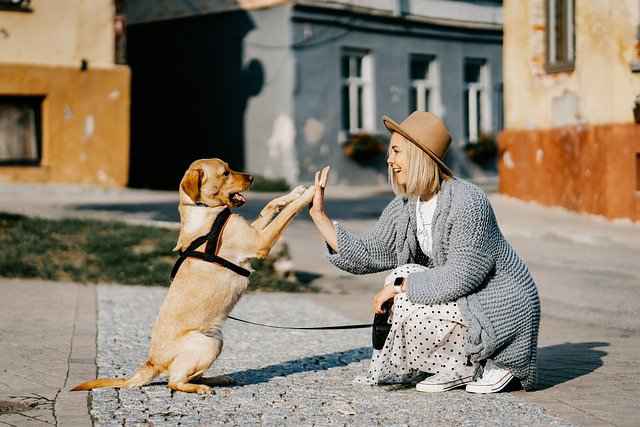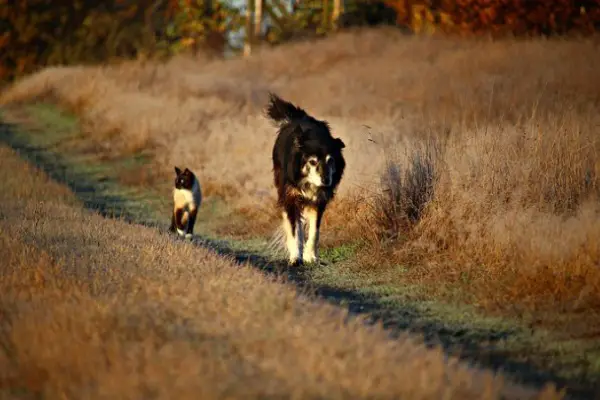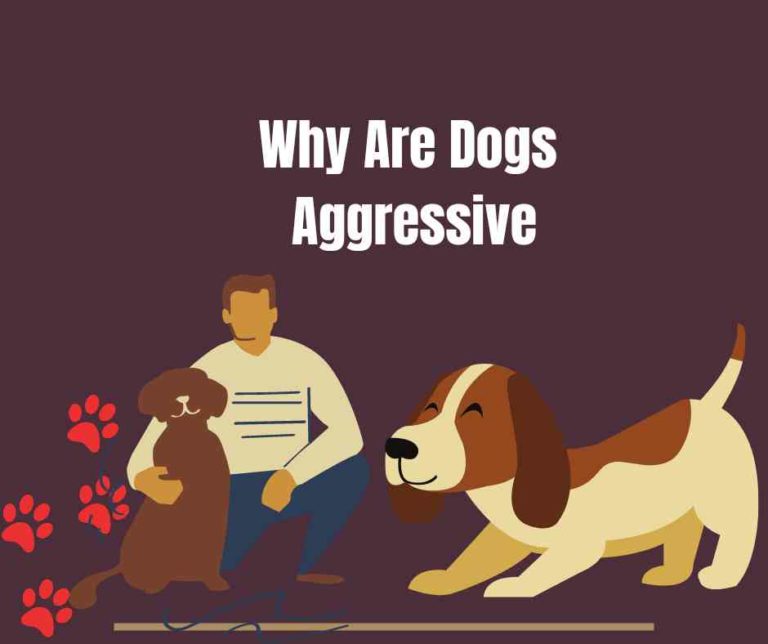Food Aggression in Dogs [Causes, Signs & Fix]
![Food Aggression in Dogs [Causes, Signs & Fix] Food Aggression in Dogs](https://petcreeks.com/wp-content/uploads/2023/10/pexels-vlada-karpovich-6801934.jpg)
Today, we’re diving into a topic that can sometimes make our furry friends a bit snappy – food aggression in dogs.
If you’ve ever experienced those intense growls and protective behavior around their bowls, don’t worry, you’re not alone.
In this blog post, we’ll explore the causes, signs, and practical tips to help you tackle this common issue head-on.
So, let’s get started!
What is Food Aggression in Dogs?
Food aggression in dogs is a type of aggression in dogs that refers to a behavioral issue where a dog displays aggressive or possessive behavior when it comes to food.
This can manifest as growling, snapping, or even biting when anyone or anything approaches their food bowl or tries to take away their food.
Signs of Food Aggression in Dogs
Food aggression in dogs can manifest through a variety of signs. One common sign is growling or snarling when approached while eating or when someone tries to take away their food.
Dogs with food aggression may also show intense guarding behavior, such as standing over the food bowl or stiffening their body.
Another sign is lunging or snapping at people or other animals who come near their food. Some dogs may exhibit resource guarding by hiding or burying food or toys.
Other signs include excessive salivation, gulping down food quickly, or displaying tense body language while eating. It is important to address food aggression promptly to ensure the safety of all involved.
Read more about identifying aggression in dogs.
Causes of Food Aggression in Dogs
Food aggression in dogs can be caused by various factors. Here are some causes of food aggression in dogs:
1. Competition for food with littermates
During the early stages of development, puppies often compete for food with their littermates. This competition can lead to the development of food aggression as some puppies may dominate the food bowl and use aggression to maintain control over the resources.
2. Resource guarding instinct
Dogs have a natural instinct to guard their resources, including food. This behavior is believed to be a throwback to their wild ancestors who had to protect their food from other animals. Even though domesticated dogs no longer need to hunt for their food, this instinct can still persist.
Dogs that have not been properly socialized may exhibit food aggression. If a dog has not been exposed to different people, animals, and environments during their early development, they may become anxious or fearful when their resources, such as food, are approached by others.
4. Previous negative experiences
Dogs that have had negative experiences related to food, such as being deprived of food or having their food taken away, may develop food aggression as a defensive response.
These negative experiences can create a sense of fear aggression, insecurity, and a need to protect their food.
5. Medical conditions
Some medical conditions, such as pain or discomfort while eating, can contribute to food aggression in dogs. If a dog experiences pain or discomfort while eating, they may become defensive and exhibit aggressive behavior to protect themselves.
6. Inconsistent or inadequate feeding routines
Inconsistent or inadequate feeding routines can contribute to food aggression in dogs. If a dog does not have a consistent feeding schedule or if they are not provided with enough food, they may develop a sense of insecurity and become more protective of their food.
Read more about the causes of aggression in dogs.
The Dangers of Ignoring Food Aggression in Dogs
Ignoring food aggression in dogs can have several dangerous consequences. Here are some dangers of ignoring food aggression in dogs:
Increased Risk of Aggressive Behavior: Ignoring food aggression can lead to an escalation of aggressive behavior in dogs. When a dog’s food aggression is not addressed, it can become more intense over time, potentially leading to bites or attacks on humans or other animals. This poses a significant risk to the safety of both the dog and those around them.
Injury to Humans or Other Animals: Dogs with food aggression may become possessive and defensive over their food, leading to aggressive behaviors such as growling, snapping, or biting. Ignoring these warning signs can result in injuries to humans or other animals who come into contact with the dog during meal times or when food is present.
Disruption of Household Harmony: Food aggression can create a tense and stressful environment within the household. Other pets or family members may feel threatened or anxious around the aggressive dog, leading to conflicts or a breakdown in the overall harmony of the household. Ignoring food aggression can strain relationships and make it difficult to maintain a peaceful living environment.
Difficulty in Training and Socialization: Dogs with food aggression may have difficulty in training and socialization. Their aggressive behavior can make it challenging to teach them basic obedience commands or expose them to new environments and experiences. Ignoring food aggression can hinder the dog’s ability to learn and adapt, limiting their overall development and well-being.
Limited Quality of Life for the Dog: Ignoring food aggression can significantly impact a dog’s quality of life. The constant stress and anxiety associated with food aggression can lead to a diminished sense of well-being for the dog. They may become fearful, anxious, or even depressed, which can affect their overall happiness and enjoyment of daily activities.
Strategies to Address Food Aggression in Dogs
The following are some common strategies for addressing food aggression in dogs:
Step 1: Understand the Root Cause of Food Aggression
The first step in addressing food aggression in dogs is to understand the underlying cause of the behavior.
Food aggression can stem from various factors, including fear, anxiety, resource guarding, or a history of competition for food.
By identifying the root cause, you can tailor your approach to address the specific needs of your dog.
Step 2: Create a Safe Feeding Environment
To address food aggression, it is important to create a safe and controlled feeding environment for your dog. This includes:
- Feeding in a Quiet Space: Choose a quiet area where your dog can eat without distractions or interruptions. This helps reduce anxiety and potential triggers for aggression.
- Establish a Feeding Routine: Set a consistent feeding schedule to establish a routine for your dog. This can help reduce anxiety and create a sense of predictability.
- Separate Feeding Areas: If you have multiple dogs, feed them in separate areas to prevent competition and reduce the likelihood of aggression.
Step 3: Stay in the Same Room While your Dog Eats
This is the first step to help dogs slowly calm down from food aggression.
Dogs who have only mild food aggression will quickly realize they are not going to have their food stolen when a human family member is nearby.
Staying in the room with your dog while she eats is also a good way to monitor the way she eats and ensure she isn’t eating too fast.
Step 4: Stand Near Your Dog and Talk to Her While She’s Eating
This stage of dealing with food aggression makes your dog realize that her food isn’t constantly being threatened just because someone is nearby.
Although some dogs may be very uncomfortable with this at first, standing close to your dog and having a general conversation with her while she eats is an important step to take.
Step 5: Implement Desensitization and Counterconditioning Techniques
Desensitization and counterconditioning are effective techniques to modify your dog’s response to food-related triggers. Here’s how to implement these techniques:
- Desensitization: Gradually expose your dog to food-related triggers, such as approaching their food bowl or touching their food, at a distance that does not elicit aggression. Over time, gradually decrease the distance between your dog and the trigger while rewarding calm behavior.
- Counterconditioning: Pair the presence of food-related triggers with positive experiences or rewards. For example, when approaching your dog’s food bowl, toss high-value treats nearby to create a positive association. This helps your dog associate the trigger with positive outcomes and reduces their aggression response.
Step 6: Practice Obedience Training and Impulse Control
Obedience training and teaching your dog impulse control can also help address food aggression.
By reinforcing basic commands such as “sit,” “stay,” and “leave it,” you can establish boundaries and teach your dog to wait patiently for their food.
Step 7: Hand-feed Your Dog and Practice Trades
If things are not going as planned then you have to stop using a food bowl and start hand-feeding all meals to the dog, giving him a few pieces of kibble at a time.
By doing this, you’ll change the association of hands near the dog’s food from negative to positive. This is a good way to manage guarding behavior.
Teach your dog to always expect something better, making it worth trading.
If the dog becomes threatening (growling, stiffening up, etc.) toward you at any point, back up to the step where she was relaxed and work forward from that step again.
Step 8: Gradually Increase Challenges
As your dog progresses in their training, gradually increase the level of challenge to reinforce their improved behavior.
This can include introducing mild distractions during feeding, such as tossing a toy nearby or having someone walk by while your dog is eating.
Always monitor your dog’s response and adjust the level of challenge accordingly.
Step 9: Maintain Consistency and Patience
Consistency and patience are key when addressing food aggression in dogs. It is important to consistently apply the training techniques and maintain a calm and assertive demeanor.
Remember that progress may take time, and each dog responds differently. Stay patient and celebrate small victories along the way.
Step 10: Seek Professional Help if Needed
If you encounter challenges or if your dog’s food aggression persists despite your efforts, do not hesitate to seek professional help. A professional dog trainer or behaviorist can provide additional guidance, assess the situation, and offer tailored solutions to address your dog’s specific needs.
Remember, addressing food aggression requires a systematic and patient approach. With the right strategies and consistent training, you can help your dog overcome food aggression and create a safer and more harmonious feeding environment.
Preventing Food Aggression in Dogs
Preventing food aggression in dogs is essential for their safety and the well-being of those around them.
Firstly, establish a consistent feeding routine to create a sense of predictability.
Secondly, avoid free-feeding and instead provide meals in designated areas, encouraging dogs to associate mealtime with a specific location.
Thirdly, teach dogs basic obedience commands such as “sit” or “stay” to establish control and reinforce good behavior.
Fourthly, gradually desensitize dogs to human presence during mealtime by starting from a distance and gradually decreasing it over time.
Fifthly, never punish or physically intervene during food aggression episodes, as this may escalate the behavior.
Frequently Asked Questions
What causes food aggression in dogs?
Food aggression in dogs can have various causes. It may stem from an instinct to protect their resources, past experiences of food scarcity or competition, lack of proper training or socialization, or even underlying medical conditions. Each dog is unique, so the triggers can vary.
How can I prevent food aggression in my dog?
Preventing food aggression starts with proper training and socialization from an early age. Make sure your dog understands basic obedience commands and teach them to wait patiently for their food. Gradually introduce other people or pets around their mealtimes to promote positive associations. Regularly handle and touch your dog while they eat to reinforce the idea that you are not a threat to their food.
What should I do if my dog displays food aggression?
If your dog already shows signs of food aggression, it’s important to address the issue promptly. Consult with a professional dog trainer or behaviorist who can guide you through a behavior modification program tailored to your dog’s specific needs. This may involve desensitization exercises, counter-conditioning techniques, and implementing management strategies to prevent incidents.
Can food aggression be cured?
With consistent training, behavior modification, and patience, food aggression in dogs can be managed and improved significantly. However, it’s essential to understand that a complete “cure” may not always be achievable, especially in severe cases or certain breeds with predispositions. The goal is to create a safe and manageable environment for your dog and those around them.
Is food aggression a sign of a dominant dog?
Contrary to popular belief, food aggression is not always linked to dominance. It can be a learned behavior or a result of fear, anxiety, or resource-guarding. It’s crucial not to label your dog as dominant solely based on food aggression. Understanding the underlying causes and working with a professional can help determine the root of the behavior and develop an appropriate training plan.
Conclusion
In conclusion, food aggression in dogs is a common issue that can be addressed with patience and training.
Remember, it’s important to create a calm and structured feeding environment to help your furry friend feel safe and secure.
By understanding their needs and working with them, you can foster a healthy relationship around mealtime.


![Do French Bulldogs Bark A Lot [10 Bark Triggers] Do French Bulldogs Bark A Lot](https://petcreeks.com/wp-content/uploads/2021/07/Do-French-Bulldogs-Bark-A-Lot-768x644.jpg)

![How to Stop Aggression in Dogs [12 Strategies] Stop Aggression in Dogs](https://petcreeks.com/wp-content/uploads/2023/10/guard-dog-3494494_640.jpg)

